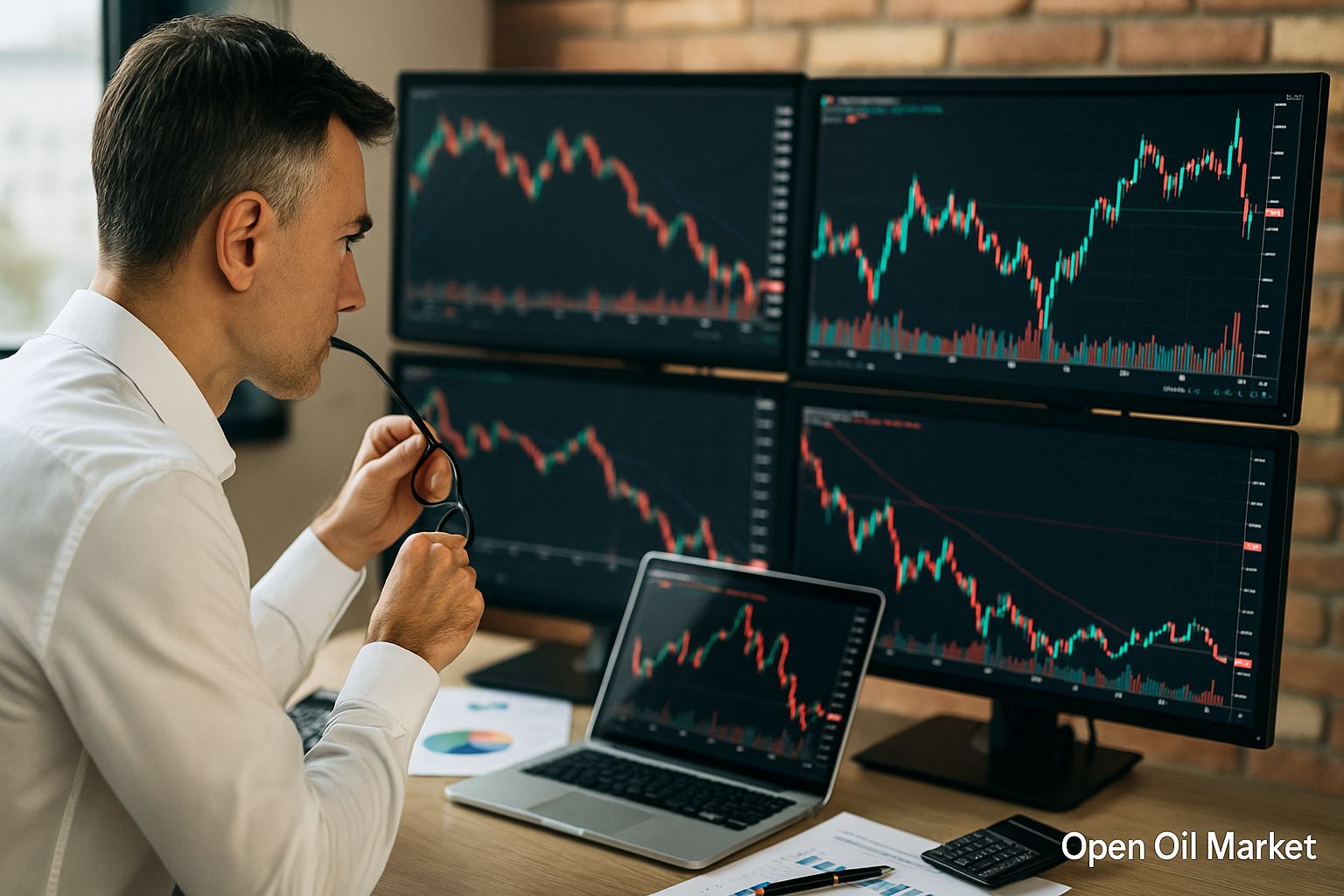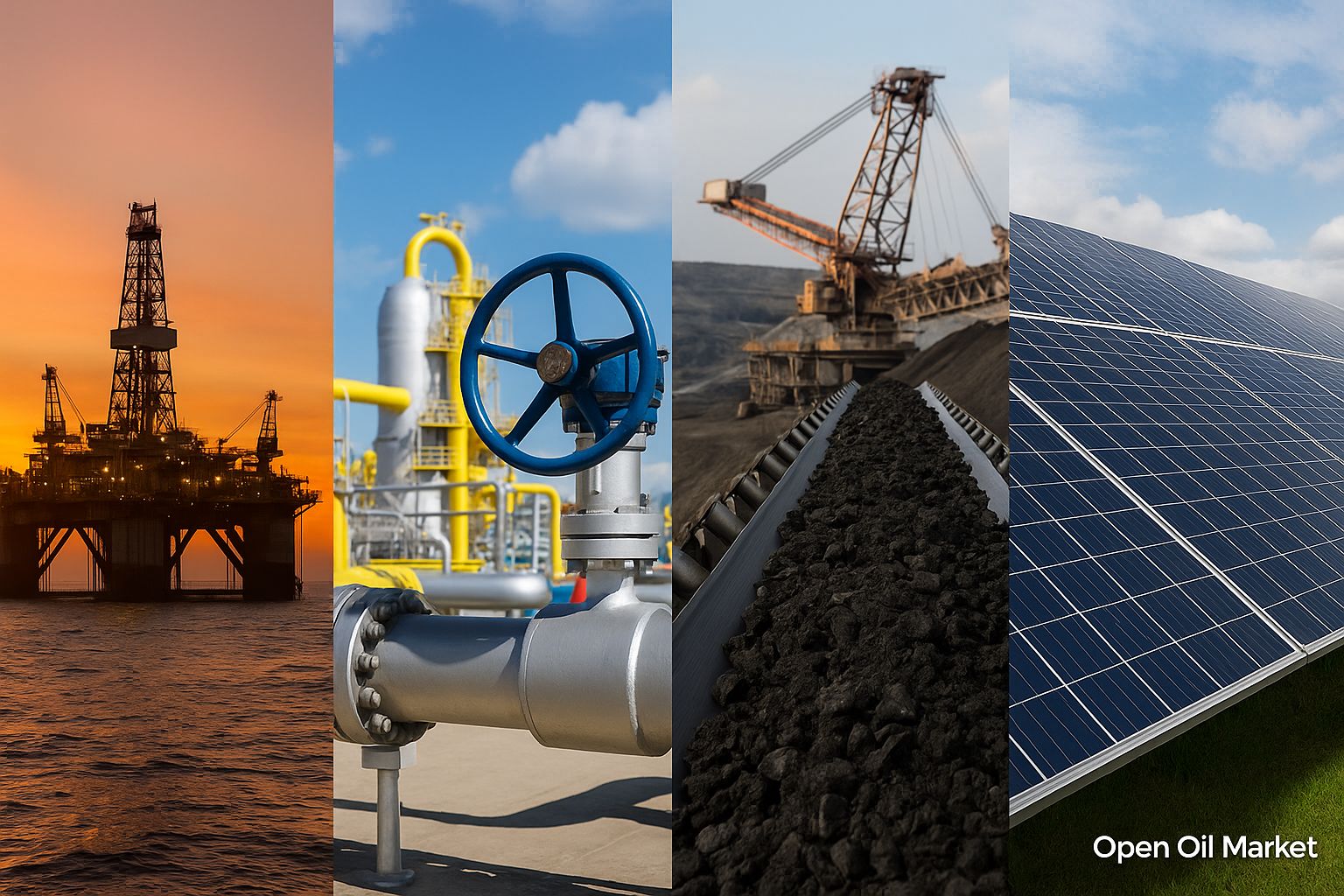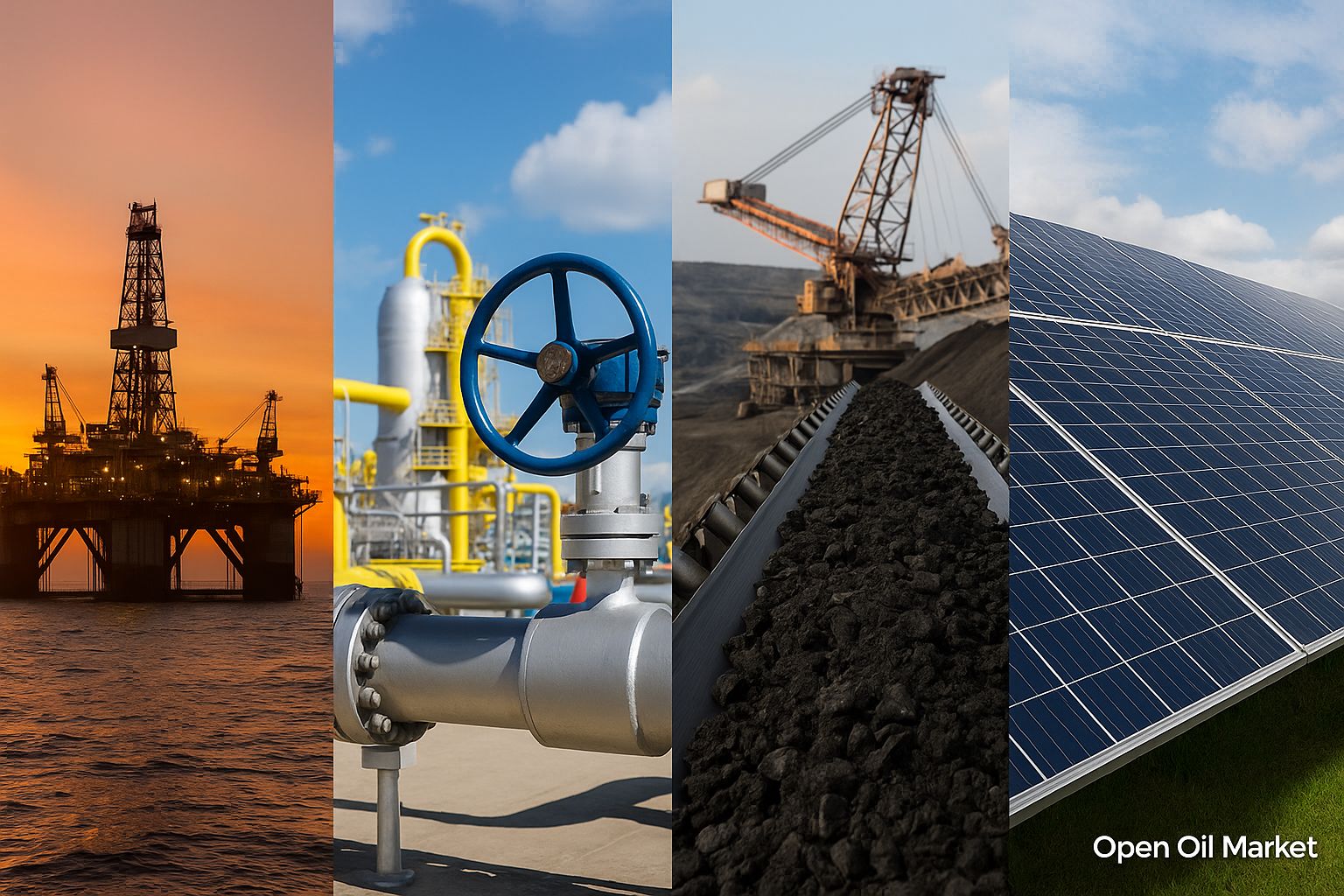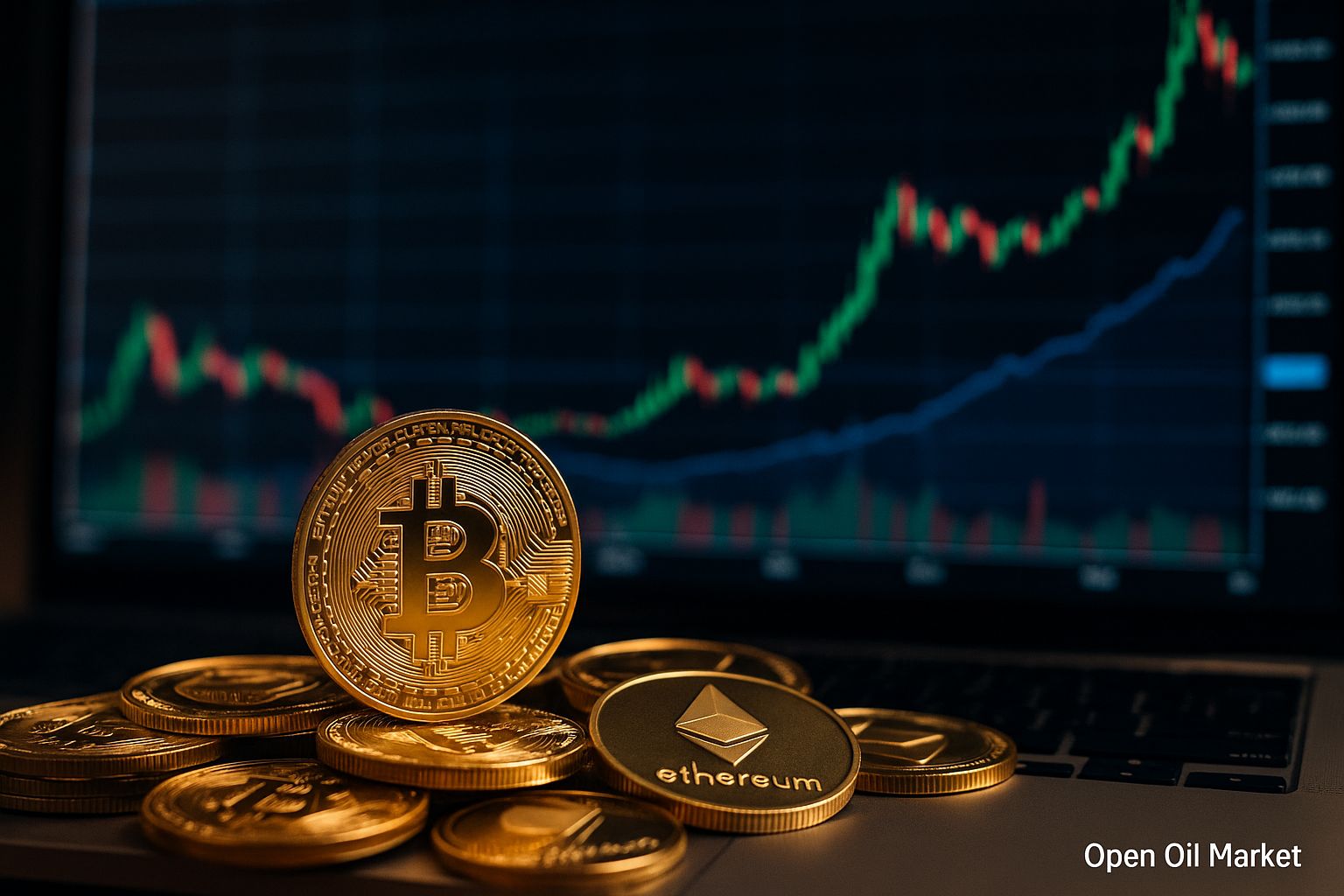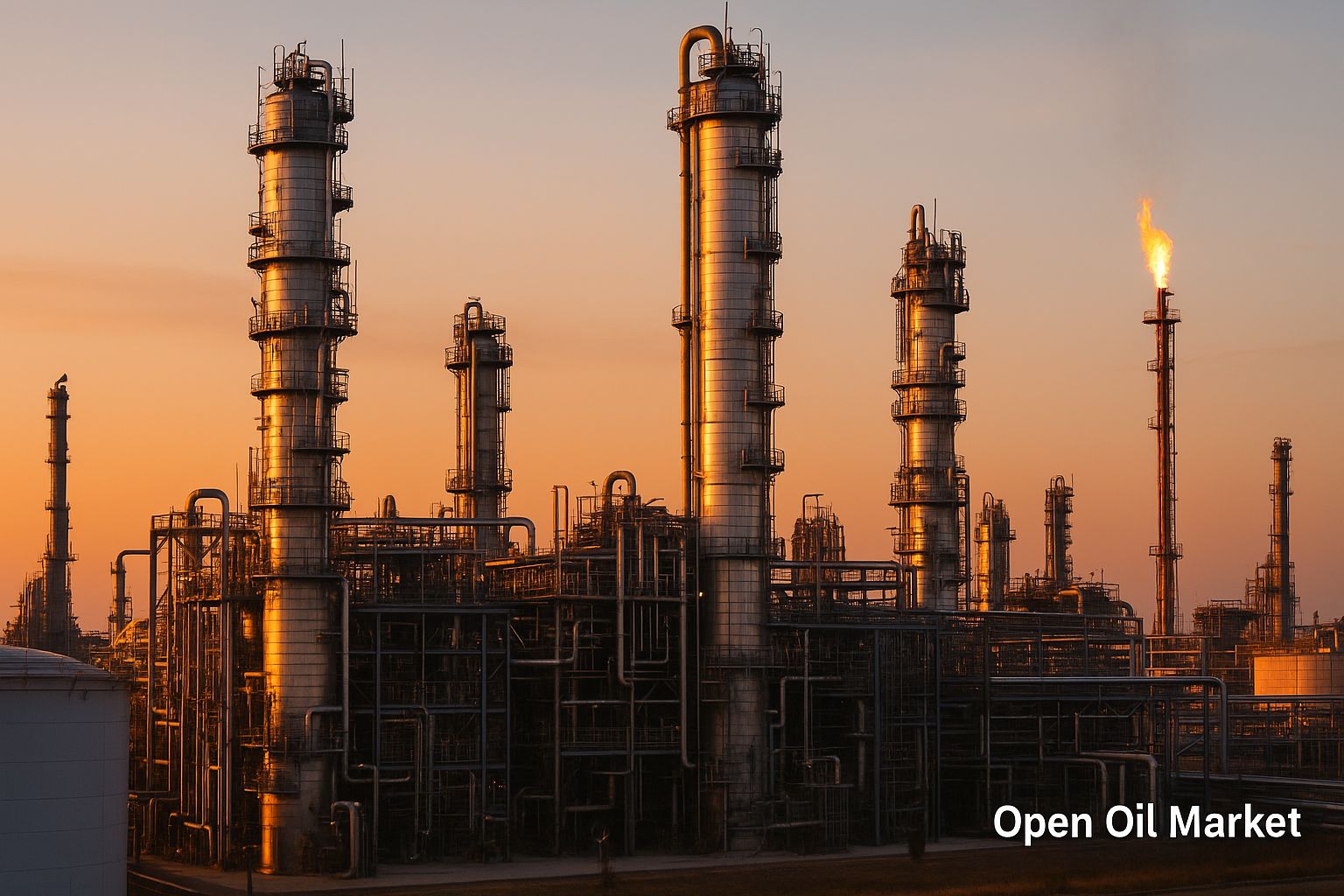
Current Trends in the Fuel and Energy Sector as of 23 September 2025: Stability in Oil and Gas Prices, Increased Imports by India and China, Renewables Records, High Coal Demand, and Stabilisation Measures in Russia's Fuel Market. A Comprehensive Overview for Investors and Energy Sector Participants.
The latest developments in the fuel and energy sector as of 23 September 2025 showcase a simultaneous stabilisation of commodity markets amid ongoing geopolitical pressure. Western nations are preparing to impose further restrictions on the Russian energy sector, maintaining a stringent sanctions regime without apparent easing. Meanwhile, the global oil market remains relatively calm: oversupply and moderate demand keep Brent prices hovering around the upper $60 per barrel mark. The European gas market faces autumn well-prepared, with underground gas storage filled to over 90% of capacity, ensuring a high level of energy security and containing prices at moderate levels.
Simultaneously, major Asian economies – China and India – continue to actively increase their purchases of oil, gas, and coal, reinforcing their energy security strategies in the face of external pressure. The global transition to clean energy is gaining momentum, with many countries recording generation records from renewable sources, although traditional fuels remain essential for system reliability. In Russia, following a recent spike in petrol prices, authorities are extending and intensifying measures to stabilise the domestic market – from amending the damping mechanism to prolonging temporary restrictions on the export of petroleum products. Below is a detailed overview of key news and trends affecting the oil, gas, energy, and commodity sectors as of today.
Oil Market: Stable Prices Amid Oversupply and Weak Demand
By the end of September, global oil prices exhibit a restrained dynamic following summer fluctuations. The Brent benchmark is trading around $66–68 per barrel, while American WTI fluctuates between $62 and $64. These levels are approximately 10% lower than the prices a year ago, reflecting a gradual retreat from the peaks of the energy crisis experienced in 2022–2023. Several fundamental factors are influencing the current situation:
- OPEC+ Production Increasing. The oil alliance continues to methodically increase market supply, gradually lifting previous restrictions. Starting in October, OPEC+ countries are permitted to increase production by approximately 140,000 barrels per day (after an increase of roughly 550,000 b/d a month earlier). Despite relatively low prices, key exporters are eager to reclaim lost market shares. Since spring, production quotas have risen by over 2.5 million b/d, intensifying market saturation. In mid-September, delegates at a technical committee meeting of OPEC+ in Vienna discussed methods for assessing maximum production capacities – this move may precede future quota adjustments. A full meeting of the alliance's ministers is scheduled for 5 October, where the issue of maintaining current production growth rates will be addressed.
- Weak Demand and Rising Inventories. Global oil consumption is increasing noticeably slower than in previous years. The International Energy Agency (IEA) forecasts that in 2025, global demand will rise by less than 1 million barrels per day (for comparison, the increase in 2023 exceeded 2.5 million). OPEC also anticipates modest consumption growth of approximately 1.2 million b/d. Factors behind this trend include global economic slowdown (particularly the decline in industrial growth in China) and the lasting effects of high prices from previous years that have stimulated energy efficiency measures. Concurrently, commercial inventories outside of OPEC are rising: for instance, the United States unexpectedly recorded an increase in oil reserves in September, signalling the formation of a surplus. American companies are maintaining production near record levels (~13 million b/d), and U.S. authorities are in no rush to replenish strategic reserves to avoid creating additional demand. Other non-OPEC producers, including Brazil and Canada as well as several African nations, are also ramping up production. Saudi Arabia, having concluded a period of high domestic consumption over the summer, has sharply increased crude oil exports, reclaiming its market share.
- Geopolitics and Finance. The sanctions standoff between Russia and the West continues to elevate uncertainty levels: prices reflect a certain "risk premium," considering potential supply disruptions. Nonetheless, specific diplomatic contacts (such as the summer summit between leaders of Russia and the U.S. in Alaska) maintain hope for gradual de-escalation, tempering sharp price increases. In financial markets, central bank policies play a crucial role: the U.S. Federal Reserve cut the base rate by 0.25 percentage points in September for the first time in a year due to economic slowdown. This led to a slight weakening of the dollar, providing temporary support for commodities, including oil. However, concerns regarding oversupply and sluggish demand prevail, preventing oil prices from entering a sustainable rally.
Collectively, these factors keep the oil market close to a surplus state. Prices fluctuate within a narrow range, lacking conditions for either a rapid rise or a collapse. Many analysts believe that if current trends persist, oil could remain relatively cheap: by 2026, the average Brent price might drop closer to $55 per barrel. However, market participants are incorporating risks of unforeseen disruptions into their strategies – such as escalation of conflicts in the Middle East or natural disasters that could disrupt production. For now, oversupply and cautious demand compel oil companies and investors to act judiciously.
Gas Market: Full Storage and Comfortable Prices in Europe
The gas market remains primarily focused on Europe, which is confidently preparing for the winter season. EU countries rapidly filled underground gas storage over the summer, and by the end of September, total reserves exceeded 92–95% of storage capacity—significantly above interim target levels. Near-complete gas reserves provide the European energy system with a vital buffer ahead of the heating season. Consequently, exchange prices are held at relatively low levels: futures quotations at the Dutch TTF hub stand around €30 per MWh (approximately $380 per 1000 cubic metres), significantly below the peaks of the previous winter. This price plateau indicates that supply-demand balance in the European market has stabilised as autumn approaches.
Additional support for price stability has come from record liquefied natural gas (LNG) imports from various regions. Following the turbulence of 2022–2023, European importers have diversified their supply sources: substantial volumes of LNG are arriving from the U.S., Qatar, African countries, and continue to indirectly come from Russia through intermediaries. In the summer of 2025, the EU capitalised on relatively low spot prices and reduced competition from Asia to increase LNG purchases—terminals operated at record capacity during the period of weak Asian demand. These steps enabled additional volumes of gas to be accumulated, allowing Europe to enter winter without signs of deficit. On the cusp of the heating season, the European gas market appears robust, and current price levels are comfortable for consumers and industries alike.
However, experts caution that the favourable situation is not guaranteed throughout winter. In the event of extreme cold weather or unforeseen disruptions in LNG imports, the pricing environment could change. Europe remains dependent on external fuel supplies: domestic production in the EU continues to decline, and pipeline supplies of Russian gas have been reduced to a minimum due to sanctions and geopolitical factors. Nevertheless, accumulated reserves, diversification of LNG imports, and energy efficiency measures suggest that even in adverse scenarios, acute shortages can be avoided. EU regulators are also working on new initiatives—from extending the gas joint procurement mechanism to accelerating the development of renewable energy—to bolster energy security and reduce price volatility in the future.
International Politics: Sanctions Standoff Intensifies
The geopolitical situation surrounding the energy sector remains tense. After summer signals of a willingness to engage in dialogue, no significant breakthroughs have materialised. On the contrary, by September, Western allies are only intensifying sanctions pressure on Moscow. The United States is considering new restrictions against the Russian fuel and energy sector—including sanctions targeting major oil and LNG exporters, as well as foreign companies helping to circumvent existing prohibitions. The European Union, having postponed the presentation of the 19th sanction package (originally expected to be announced on 17 September), intends to refine measures jointly with G7 partners. According to European media reports, the European Commission may present the new package by the end of September or early October. This package is expected to target Russian oil and gas companies and banks while also aiming for the first time at third countries: foreign oil refineries in India and China processing Russian oil, essentially circumventing established restrictions, might be impacted. At the same time, it has become known that no new direct restrictions on Russian oil imports into the EU are planned—several countries within the bloc (including Hungary) are categorically against steps that could undermine their energy security.
Moscow, for its part, is striving to adapt to the realities of sanctions. Russian oil and gas exports are rapidly pivoting from Europe to Asia and the Middle East. Supplies of raw materials are increasing primarily to India, China, Turkey, and several African countries – often with significant discounts to global prices to maintain market share. According to officials, despite the sanctions, revenue from oil and gas exports remains acceptable due to relatively high raw material prices and a weak ruble. However, restrictions significantly impact the industry's long-term prospects: access to modern technologies and equipment for developing hard-to-reach fields is limited, and foreign investors are scaling back their participation in new projects. This creates risks for the slowing technological development of the Russian fuel and energy sector in the future.
An additional uncertainty factor is the increased threats to energy infrastructure. In recent weeks, drone attacks on Russian fuel and energy facilities have become more frequent. For instance, during the night of 18 September, a major petrochemical plant in Bashkiria was attacked by drones, leading to a fire; several days earlier, UAV strikes targeted refineries in the Leningrad and Saratov regions. While air defence systems intercept most drones, the occurrence of such incidents heightens market nerves and compels authorities to prioritise the protection of energy facilities. Overall, the sanctions conflict and associated risks remain significant sources of uncertainty for global energy markets. Markets are pricing in the prolonged nature of the standoff, and energy companies are factoring these threats into their planning. Even minor pauses in escalation—such as delays in new sanctions or targeted diplomatic agreements—can temporarily improve sentiment, but there are currently no serious prerequisites for de-escalation.
Asia: India and China Increase Imports and Domestic Production
Asian giants continue to play a crucial role in global energy markets, compensating for declining demand in the West. Both India and China are simultaneously increasing hydrocarbon purchases and developing domestic production, striving to meet their economic needs and safeguard against external shocks. Their policies blend a pragmatic approach to supplier selection with substantial investments in their energy sectors, significantly impacting global flows of oil, gas, and coal.
- India. Despite pressure from the U.S. and Europe, New Delhi has made it clear that it does not intend to sharply cut purchases of Russian hydrocarbons. Russia remains a major oil supplier to the Indian market, providing a significant share of consumption. According to traders, Indian refineries continue to actively buy Russian Urals oil at a discount of approximately $4–5 to Brent prices, which helps manage raw material costs. As a result, India is not only maintaining high levels of Russian oil imports but is also increasing the import of petroleum products from Russia (for instance, diesel) to meet domestic demand. Concurrently, the government is accelerating programmes to reduce dependence on imports in the long term: significant investments are being made in developing its own oil and gas production. In August, Prime Minister Narendra Modi announced the start of a large-scale programme for exploring deep-water fields – the state corporation ONGC has already commenced drilling ultra-deep wells in the Andaman Sea in hopes of uncovering new reserves. These steps are aimed at gradually increasing India’s energy self-sufficiency, although in the coming years, the country is expected to remain about 80% dependent on oil imports and 40% on gas imports.
- China. As the world’s second-largest economy, China is ramping up its import of energy resources while simultaneously investing in boosting its domestic production. Beijing has not joined the sanctions against Moscow and is capitalising on the situation by purchasing Russian oil and gas under favourable terms. Official data indicates that in 2024, China imported over 212 million tonnes of oil and about 246 billion cubic metres of natural gas, surpassing the previous year's figures. In 2025, import growth continues, though the pace has slightly slowed due to a high base. Simultaneously, Chinese oil and gas corporations arerecording production records: in the first eight months of 2025, China extracted about 145 million tonnes of oil (+1.5% year-on-year) and 175 billion cubic metres of gas (+5% year-on-year). Domestic production covers only part of the growing demand, meaning China remains dependent on imports for approximately 70% of its oil and 40% of its gas. In strengthening its long-term energy security, Beijing is expanding cooperation with Moscow. Purchases of pipeline gas through the "Power of Siberia" have already increased, and key parameters for the future "Power of Siberia 2" pipeline have been agreed upon, which will significantly boost Russian gas exports to China in the coming years. Notably, China is willing to ignore external restrictions for its interests: in recent months, Chinese companies have acquired several batches of liquefied gas from the new "Arctic LNG-2" project, despite U.S. sanctions against it. A separate terminal in the Bayhai port has been designated exclusively for receiving this fuel, utilising Russian LNG—this scheme minimises sanction risks. Thus, both India and China demonstrate a willingness to secure their energy supplies on their own terms, even if this contradicts Western positions. Their activity remains a driving factor for the growth of global hydrocarbon demand and the redistribution of trade flows.
Energy Transition: Records in Renewables and the Role of Traditional Resources
The global transition to low-carbon energy in 2025 is reaching a new stage. Record levels of capacity installation and electricity generation from renewable sources—primarily solar and wind—are being established across various regions worldwide. Following 2024, total generation from solar and wind power plants within EU countries surpassed generation from coal and gas power plants for the first time. This trend continues into 2025: due to active construction of new solar parks and wind farms, the share of "green" electricity in the EU continues to grow, exceeding 50% of consumption during certain months. In the United States, renewable energy has also reached a record share—exceeding 30% of electricity generation, with combined generation from wind and solar surpassing production from coal power plants. China, the global leader in renewable capacity installation, is annually commissioning tens of gigawatts of new solar and wind plants, continuously setting its own records for "green" generation.
Investors and energy companies are increasing their investments in low-carbon projects. According to IEA estimates, total investments in the global energy sector in 2025 will exceed $3 trillion, with more than half directed towards renewable energy projects, modernisation of power grids, and energy storage systems. Traditional oil and gas powers in the Middle East are also beginning to invest in solar and wind power plants, preparing for a gradual decline in demand for fossil fuels. Concurrently, major oil and gas corporations are diversifying their businesses: they are establishing divisions for producing "green" hydrogen and biofuels, and launching carbon capture and storage (CCS) projects. These steps are driven by societal and investor demands for the decarbonisation of the economy.
However, the rapid increase in the share of renewables poses new challenges for energy systems. As solar and wind generation rises, the variability of generation increases—during windless days and at night, reserve capacity is required. Many countries still rely on traditional sources—gas, coal, and nuclear plants—to balance the load and ensure reliable supply during peak periods. There is an active push for developing energy storage systems (industrial battery farms, pumped-storage hydroelectric stations) and implementing intelligent grids to enhance supply flexibility. Experts forecast that by 2026–2027, total generation from renewable sources may become the leading source globally, overtaking coal in terms of electricity production volumes. Nevertheless, in the coming years, traditional resources—natural gas, coal, and nuclear energy—will continue to play a critical role in ensuring energy system stability. The current phase of the energy transition focuses on achieving an optimal balance, in which "green" energy records growth while classic hydrocarbons remain essential for meeting demand reliably.
Coal: High Demand in Asia Supports Market Stability
Despite the climate agenda, the global coal market in 2025 is functioning at historically high consumption levels. Global demand for coal remains close to the record levels of 2022–2023, primarily supported by Asian countries. China remains the world’s largest producer and consumer of coal: more than 4 billion tonnes are extracted annually, which are almost entirely burned in Chinese power plants. During peak demand periods (for instance, summer heat and increased air conditioning usage), even these colossal volumes can be insufficient—Beijing is ramping up coal imports to prevent electricity shortages. India generates about 70% of its electricity from coal-fired power plants, with absolute consumption continuing to rise as the economy develops. Major developing countries in Southeast Asia (Indonesia, Vietnam, Thailand, and others) are also commissioning new coal capacities to meet rising electricity demand.
Key coal exporters—including Indonesia, Australia, Russia, South Africa, and others—have increased production and supplies in recent years, capitalising on the period of high prices. Following the price peaks of 2021–2022, global prices for thermal coal have stabilised at moderate levels. For example, Australian thermal coal is trading at $130–150 per tonne—significantly below the extremes of two years ago, yet still above average levels from the preceding decade. This price range remains profitable for coal mining companies and acceptable for electricity consumers. Many governments have announced plans to gradually reduce coal use to meet climate commitments; however, in the short term, this resource remains indispensable for ensuring reliable energy supply to hundreds of millions of people. Even in Europe, where decarbonisation is prioritised, authorities are compelled to keep some coal-fired plants on standby: for instance, Germany, Poland, and other countries maintain certain coal plants to prepare for potential gas supply interruptions or inadequate renewable generation. Thus, the global coal sector currently finds itself in a state of relative equilibrium: demand remains consistently high due to Asia, supply is adequate, and prices are predictable. In the long term, the share of coal in the energy balance will gradually decline as climate policies tighten, but in the coming years, coal will maintain a significant role in ensuring energy security during peak loads and price shocks in the gas market.
The Russian Fuel Market: Continuation of Emergency Stabilisation Measures
The internal fuel market in Russia has faced a crisis in late summer to early autumn as a result of a sharp increase in petroleum product prices. In August, wholesale prices for petrol and diesel reached historic highs, which soon reflected in retail prices. By mid-September, the price of AI-95 petrol on the St. Petersburg International Commodity Exchange surged to a record 73,000 roubles per tonne, surpassing even August peaks; diesel fuel also rose rapidly in price. This price surge resulted from a combination of factors:
- Seasonal Demand and Agriculture Sector. The summer period typically sees increased fuel consumption. In 2025, the peak of car travel and a large-scale harvest campaign in agriculture led to rising demand for petrol and diesel. These seasonal factors coincided with the depletion of stocks among independent fuel traders, heightening market tensions and triggering panic buying.
- Repairs and Emergencies at Refineries. Over the summer, several major refineries underwent planned and unplanned repair work, reducing fuel output. Additional disruptions included extraordinary incidents: on 14 September, a drone attack on the Kirishi Refinery in the Leningrad region was thwarted, resulting in a fire that disabled a key installation unit (up to 40% of the refinery's capacity) for several weeks, consequently reducing the supply of petrol and diesel to the market.
- Attractive Exports and Flaws in the Damping Mechanism. High export prices for petroleum products, particularly diesel, incentivised oil companies to divert their products abroad at the expense of domestic supplies. Simultaneously, the damping mechanism malfunctioned: exchange prices for petrol surpassed the threshold set in the tax code (~66.5 thousand roubles/tonne for AI-92), resulting in the elimination of budget compensations to refiners. In simple terms, with such high domestic prices, selling fuel for export became more profitable, exacerbating the domestic market deficit.
The government swiftly responded to the fuel crisis by implementing a range of emergency measures. Temporary restrictions on the export of petroleum products have been in place since late August: major oil companies have been instructed to refrain from exporting petrol and diesel until 30 September, while the ban for independent traders has been extended to 31 October 2025. Refineries have been ordered to prioritise saturating the domestic market – with increased supplies directed to problematic regions (in particular, additional fuel volumes have been dispatched to Primorsky Krai and Crimea to alleviate local deficits). Concurrently, authorities adjusted the damping mechanism: the maximum allowable deviation of exchange fuel prices from the basic indicator, which triggers compensation payments to refineries, has been agreed to increase. In other words, the government raised the "ceiling" for triggering the damping mechanism—from 10% to 20% for petrol and from 20% to 30% for diesel. This will allow refiners to receive payments from the budget even amid higher domestic prices, reducing the incentive to export fuel.
The measures implemented have already begun to yield results. After the price peaks of mid-August, wholesale fuel quotations dropped by approximately 7–8%. However, in the second decade of September, price pressures intensified again—exchange prices for petrol and diesel began to rise once more due to still-high demand and persistent temporary factors (not all refineries have completed repairs, and simply restricting exports has proven insufficient for full stabilisation). Consequently, since the beginning of the year, retail prices for motor fuel have increased by more than 6%, significantly outpacing inflation (approximately 4% during the same period). Nevertheless, authorities assert that the situation remains under control: petrol and diesel stations have been supplied with sufficient volumes, and new batches from refineries are arriving regularly. It is expected that as agricultural work concludes and all plants return to normal operation, price growth at refuelling stations will slow. The government emphasised that resuming petroleum product exports is only possible following the complete normalisation of the internal market and a stable decline in exchange prices. If necessary, restrictions are ready to be extended further, employing additional resources to keep fuel prices within acceptable limits and prevent petrol and diesel shortages in autumn 2025.

